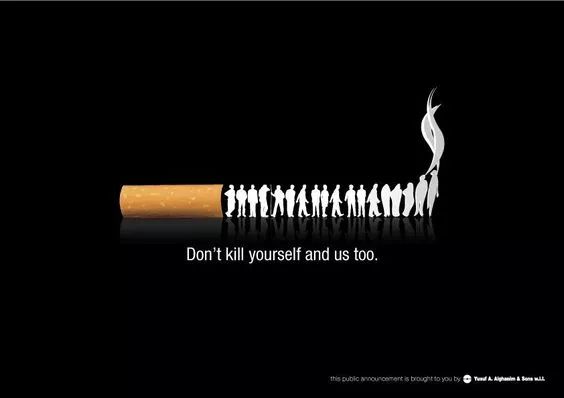Title: The Unseen Accelerant: How Tobacco Smoke Fuels the Expansion of Pulmonary Aspergilloma Cavities
Introduction
Pulmonary aspergilloma, a distinct form of fungal lung disease, represents a complex and often insidious intersection of infection and pre-existing lung architecture. It occurs when the ubiquitous fungus Aspergillus, most commonly Aspergillus fumigatus, colonizes a pre-formed pulmonary cavity, forming a tangled mass of hyphae, fibrin, mucus, and cellular debris known as a "fungus ball." While the initial cavity formation is typically the sequela of other conditions like tuberculosis, sarcoidosis, or bullous emphysema, the progression of the aspergilloma itself is not static. A growing body of clinical evidence points to a critical, modifiable environmental factor that dramatically accelerates this progression: tobacco smoke. This article delves into the multifaceted mechanisms by which tobacco smoke acts as a potent accelerant for pulmonary aspergilloma cavity enlargement, exploring the interplay of impaired immunity, disrupted mucosal integrity, and direct fungal stimulation.
The Foundation: Understanding the Aspergilloma Niche
To appreciate tobacco's role, one must first understand the precarious balance within the cavity. A pulmonary cavity is an air-filled space surrounded by a fibrotic and often poorly vascularized wall. This environment is ideal for Aspergillus for several reasons: it is oxygen-rich (supporting aerobic fungal growth), largely shielded from systemic immune cells and antifungals by the avascular rim, and provides a ready-made anatomical pocket. The fungus ball itself is typically non-invasive in immunocompetent hosts, meaning it grows within the cavity but does not aggressively invade the surrounding lung tissue. However, its presence and growth exert mechanical and inflammatory pressures that can lead to cavity expansion, a process tobacco smoke profoundly exacerbates.
Mechanism 1: The Crippling of Pulmonary Host Defenses
Tobacco smoke is a toxic cocktail of over 7,000 chemicals, many of which are potent immunosuppressants within the respiratory tract. This systemic impairment of the host's first and second lines of defense is arguably the primary driver of accelerated fungal proliferation and cavity damage.
-
Mucociliary Dysfunction: The respiratory tract is lined with ciliated epithelial cells bathed in a protective mucus layer. This "mucociliary escalator" is a critical innate defense mechanism, trapping and propelling inhaled pathogens, including Aspergillus conidia (spores), upward toward the pharynx to be swallowed or expectorated. Tobacco smoke paralyzes the cilia, thickens the mucus, and disrupts the coordinated beating motion. This allows Aspergillus conidia to remain in the lungs for prolonged periods, significantly increasing the chance of germination and colonization within a susceptible cavity.
-
Alveolar Macrophage Dysfunction: Alveolar macrophages are the sentinels of the deep lung. They are responsible for phagocytosing and destroying inhaled conidia. Studies have consistently shown that tobacco smoke extract inhibits the phagocytic and killing capacity of these crucial immune cells. The chemicals in smoke, notably nicotine and reactive oxygen species (ROS), interfere with intracellular signaling pathways required for effective pathogen recognition and destruction. With these "sentinels" hobbled, Aspergillus faces diminished resistance, facilitating unchecked growth within the cavity.
-
Neutrophil Inefficiency: Neutrophils are the primary immune cells recruited to combat hyphal forms of Aspergillus. They attack hyphae through oxidative burst and the release of neutrophil extracellular traps (NETs). Tobacco smoke compromises neutrophil function by reducing their chemotaxis (ability to migrate to the infection site), impairing their phagocytic ability, and inducing premature apoptosis (cell death). Consequently, even if recruited to the cavity wall, their anti-fungal efficacy is severely blunted.
Mechanism 2: Disruption of Epithelial and Endothelial Barriers
Beyond immune cell dysfunction, tobacco smoke directly damages the structural integrity of the lung tissue forming the cavity wall.
-
Epithelial Damage: Chronic exposure to smoke leads to squamous metaplasia—a change in the lining of the airways and cavities from a protective ciliated epithelium to a tougher, but less functional, layered squamous epithelium. This process weakens the tissue barrier. Furthermore, smoke induces apoptosis of epithelial cells and inhibits their repair mechanisms. A thinner, damaged cavity wall is less structurally sound and more susceptible to pressure and enzymatic erosion from the expanding fungal mass and associated inflammation.

-
Angiogenesis and Vascular Permeability: The inflammatory response triggered by both the fungus and tobacco smoke involves the release of various cytokines (e.g., TNF-α, IL-8) and growth factors (e.g., VEGF - Vascular Endothelial Growth Factor). While part of a normal defense, this response is dysregulated in smokers. VEGF promotes the formation of new, often fragile, blood vessels (angiogenesis) near the site of inflammation. However, these vessels are leaky, contributing to local edema and further weakening the tissue matrix. This process not only supplies nutrients to the inflammatory and fungal mass but also destabilizes the cavity architecture, facilitating enlargement.
Mechanism 3: Direct Stimulation of Fungal Virulence and Proteolytic Activity
The relationship is not solely one of host weakness; evidence suggests tobacco components may directly influence the fungus itself.
-
Enhanced Fungal Growth: Some in vitro studies indicate that certain components in tobacco smoke can serve as a nutrient source or stimulate the metabolic activity of Aspergillus, potentially leading to more robust hyphal growth and biomass accumulation within the cavity.
-
Enzymatic Destruction: Aspergillus species are prolific secretors of potent proteolytic enzymes, such as elastases and proteases. These enzymes break down host structural proteins like elastin and collagen, which are fundamental components of the lung's connective tissue and the cavity wall. The chronic inflammatory environment fueled by tobacco smoke, with its influx of immune cells that also release matrix-degrading enzymes (e.g., MMPs from macrophages), creates a perfect storm of proteolytic activity. The cavity wall is essentially digested from both inside by fungal enzymes and outside by the host's dysregulated inflammatory response, leading to progressive cavitary expansion.
The Clinical Consequence: A Vicious Cycle
The enlargement of an aspergilloma cavity is not a benign radiographic finding. It translates directly to worsened patient outcomes. A larger cavity harbors a larger fungal mass, which perpetuates a more intense local inflammatory response. This cycle increases the risk of life-threatening complications:
- Hemoptysis: The erosion of the fragile, neo-vascularized cavity wall can lead to bleeding into the bronchial tree, resulting in mild to massive, often fatal, hemoptysis.
- Pneumonia and Spread: A weakened barrier increases the risk of bacterial superinfection in the surrounding lung tissue.
- Respiratory Decline: The destruction of functional lung parenchyma and the burden of chronic inflammation contribute to progressive shortness of breath and worsening pulmonary function.
Conclusion
Pulmonary aspergilloma is a disease of a vulnerable architectural niche. Tobacco smoke is the archetypal destabilizing force that exploits and amplifies this vulnerability. It is not a passive bystander but an active accelerant in the disease process. Through a triad of mechanisms—systemic immunosuppression, direct structural damage to lung tissue, and potential stimulation of fungal activity—tobacco smoke creates a perfect environment for Aspergillus to thrive and for the protective cavity wall to erode and expand. Recognizing this cause-and-effect relationship is paramount. It underscores smoking cessation not merely as general health advice but as a critical, targeted therapeutic intervention in the management of pulmonary aspergilloma, potentially slowing disease progression and mitigating the risk of severe complications.











